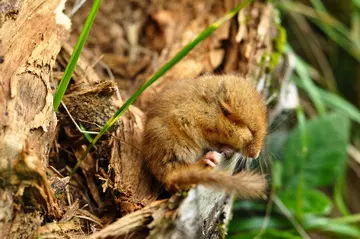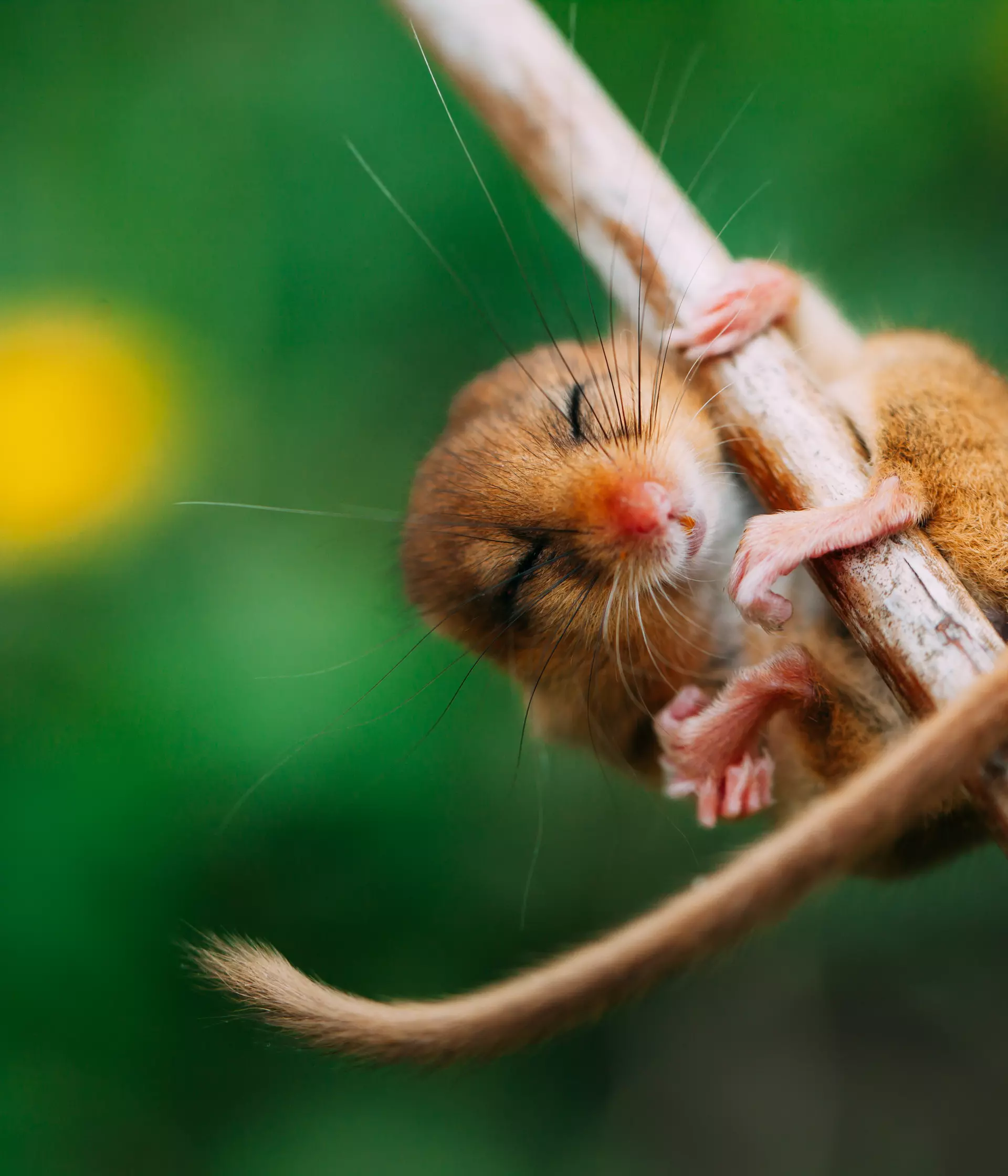Dormouse UK
Dormouse conservation
Once common across the UK, the hazel dormouse is now considered at risk of extinction due to woodland habitat loss and mismanagement. But by working together with our conservation partners, we've managed to successfully reintroduce over 1,000 dormice into 13 UK counties. We provide health checks which are crucial to the project, helping give dormice the best start possible as they return to the wild, whilst protecting local wildlife.
our work protecting wild animals from disease
Currently, the reintroduction programme is striving to improve post-release monitoring methods, as well as ensuring the dormice involved in the captive breeding continue to produce heathy, viable offspring to supplement the wild population.
Follow the journey of 30 hazel dormice that we reintroduced to British woodland, from quarantine at ZSL to their new forever home.
Hazel dormice threats
The loss of woodland and hedgerows, and changes to traditional countryside management practices has caused UK populations to be in decline. Climate change also has the potential to disrupt their long hibernations. Predators like the domestic cat, owls and weasels can catch them as they forage, whilst badgers can eat them in their nests during hibernation, but predators do not have a major impact on their populations.

Dormice in the UK
There are three dormouse species living in the UK, the native hazel dormouse and two invasive species, the garden dormouse and edible dormouse. Each of these species are from mainland Europe, and are much bigger than our native hazel dormouse. Edible dormice in particular can cause real problems, predating on bird nests, tree damage and even building damage.
What do hazel dormice eat?
Hazel dormice eat berries, seeds, flowers, pollen and nuts as well as any insects they find like . They change their diet in preparation for hibernation, focusing on fattier foods like hazelnuts. The hazel dormice we reintroduce to wild are supplemented with food after release to help give them the best start possible back in the wild.
What do hazel dormice look like?
Hazel dormice have golden-brown fur, and they are the only small British mammal with a furry tail.
Hazel dormouse habitat and distribution
In the UK, hazel dormice are most common in the woodland within the south of England at places like Sussex, Devon, and Kent. They are nocturnal and hibernate for five months of the year, from late October through to April, making them very difficult to find. But you might be able to spot the woven straw nest of a hazel dormouse amongst thick bushes. They are also found in most of mainland Europe.
Hazel dormice UK reintroductions
Hazel dormice populations have decreased by 55% over the last twenty-five years, and they are now extinct in 17 counties in the UK. We’re working towards creating healthier, better connected, and bigger populations of hazel dormice, so hopefully one day they will be commonly found across the UK again.
Sleeping hazel dormice get health checks
Thanks to the National Dormouse Monitoring Programme, dormouse nest boxes at each reintroduction site are checked every month. This post-release health surveillance can make a difference between success and failure because we can tackle disease threats before they become a problem. If a dormouse dies, we carry out a full post-mortem examination to understand those threats. We have built a database of pathological diagnoses from free-living dormice and continue to carry out scientific research to safeguard wildlife health.
The results from the post release monitoring and any subsequent post-mortem examinations not only inform the dormouse reintroduction programme but also provides an insight into how small populations of highly threatened species function in the face of changing conditions (including habitat destruction and disease).
Hazel dormice protection
Hazel dormice are a priority species in the UK Biodiversity Action Plan and are protected under the Wildlife and Countryside Act 1981.
Our hazel dormice impact
-
Ensuring healthy dormice are released
-
Detection of potential disease threats to translocated dormice
-
Developing an understanding of health and disease in reintroduced dormouse populations
Partners & Sponsors
People’s Trust for Endangered Species, Natural England, Paignton Zoo, Common Dormouse Captive Breeders Group
We go wherever nature needs us, join us on our journey across the globe restoring life everywhere. From our work deep in the rainforests of Africa through to the River Thames in London's city centre, subscribe for email updates about our progress recovering species.
